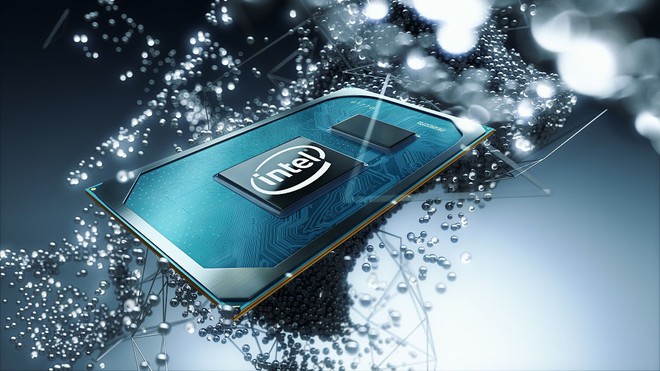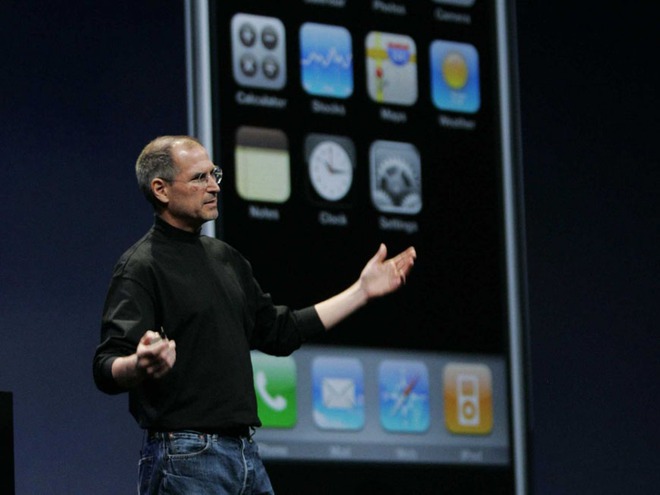Fifteen years ago, how did an Apple decision push Intel down the cliff?
- Tram Ho
In terms of business targets, Intel just had a bad quarter when its profits surpassed analysts’ expectations. However, investors still massively placed orders to sell this stock, causing the company’s value to decline to 50 billion USD not long after that. Meanwhile, their rival in technological progression, TSMC, saw an increase of more than 50% during the same period.
Most investment bank analysts recommend Intel to “sell” while recommending investors to buy TSMC and AMD. The reason is that during the earnings report, the company’s CEO revealed that Intel’s transition to 7nm will be delayed for another six months.

There’s a lot to say around this news, but there’s only one key question that matters only to Intel at this point: How does Intel – from being an undisputed leader for decades on In the process of chip manufacturing technology, which has brought the most powerful CPUs and the best capacity for the server and PC – have slipped so quickly?
Scale advantage on the learning curve
To better understand this can go back to the 80s and 90s of the last century to better understand where Intel is today. It was then that Intel transformed itself from the memory chip maker of the ’70s into a microprocessor company that kicked off the PC era. This is also the time when Intel is not only supplying critical components such as chips to most of the tech industry, but also setting the technology standards.
The knowledge curve theory states that the cost of producing a product decreases as production volume increases. At the time, making chips for the entire computer industry gave Intel huge economies of scale over other semiconductor makers. That earned the company where it is today: the world’s largest chipmaker with envious margins.
There is also another interesting theory – the chaos theory – that says, a small change in one state of the system can also cause a large change in a subsequent state of the whole. system. In Intel’s case, it’s Apple choosing the chip for its iPhone.

In 2005, as growth in the technology market was centered around personal computers, a tacit change was occurring. Apple is quietly developing the iPhone, the smartphone that will revolutionize the handheld computing device in the future. And they’re about to make an important decision: opting to use the ARM architecture for their devices, instead of using Intel processors.
More importantly, they chose TSMC as the outsourcer of the processor for them. That was when the learning curve that used to give Intel an advantage began to gradually shift to TSMC.
Slump in the smartphone market, the start of Intel’s slippage
The success of the iPhone brought TSMC hundreds of millions of processor orders each year for Apple, followed by other chip design firms such as Qualcomm. While Intel ships hundreds of millions of computer processors each year, at the same time, the smartphone industry is selling billions of devices. The vast majority of those devices use Apple or Qualcomm processors – a huge advantage of scale Intel missed out on.
It was too late when Intel realized its mistake and tried to get into this hot growing market. Operating system platforms as well as the vast majority of mobile applications have been set up to be compatible with Apple or Qualcomm chips, rather than later Intel Atom processors. Not compatible well with applications, the performance weaknesses and power efficiency on the Intel Atom chip became more evident and forced Intel to retreat from the playing field.

While the scale advantage of the knowledge curve gives TSMC a rapid acceleration in chip-making technology, the pattern of vertically integrating Intel chip design and manufacturing – has been an advantage over the decades. over the past decade – has become a weakness again. The limited and stagnant personal computer market makes it difficult to expand into new chip technology due to low margins.
In contrast to Intel, the combination of TSMC’s manufacturing capabilities and ARM’s chip design licensing created a fundamental change in the semiconductor industry, as it created a large number of chipmakers ” fabless “like Apple, AMD, Nivida and Qualcomm, among many others.
These companies began by outperforming Intel in the smartphone industry and empowered TSMC’s leadership in the chip industry by producing the most advanced volumes of chips. Samsung, which owns the chip processing business, is also benefiting in part from this trend.
However, not everyone on the chip-outsourcing playground gets the same benefits as TSMC or Samsung.
While both Samsung and TSMC are speeding up the chip production process, China’s largest chip outsourcing company, SMIC is still stuck with a 14nm process, far behind the two big names. Not only that, they also do not have the advantages of scale like TSMC or Samsung, and so the theory of the scale advantage of the learning curve shows that they will be difficult to catch up with these two big guys when Only serve the domestic market.
As for Intel, missing out on the smartphone market years ago is at a disadvantage than most people think. Not only does it lose revenue from chip manufacturing that has been booming over the years, it also leaves them lagging in chip-making technology when they don’t have the scale to invest in new technologies.
Refer to SCMP
Source : Genk
